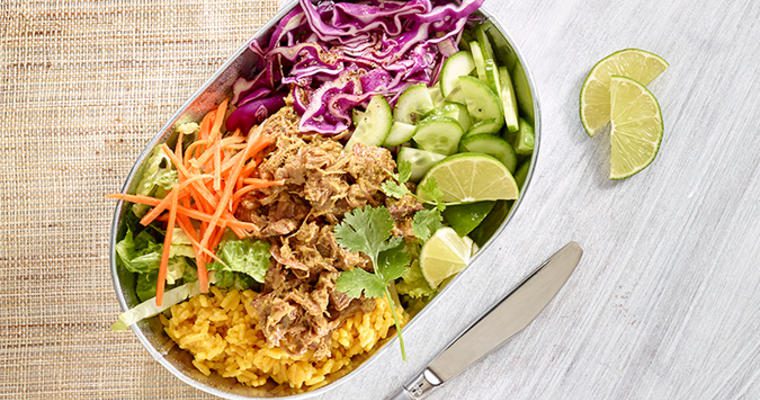Our most recent external research included visits to several vegan restaurants that serve cooked green jackfruit as a meat substitute. The entire research team was highly impressed with its meat-like quality and ability to absorb and present savory flavors.
We believe green jackfruit has sales-building menu potential for operators in virtually all foodservice segments, and is quickly headed for the mainstream.
However, some media coverage of this growing menu opportunity has created confusion regarding what the product actually is and how it is used.
In short, green jackfruit is a cooked and processed product packed in either cans or shelf-stable vacuum-packed bags, and not the fresh, ripe fruit that is increasingly appearing in grocery stores and produce markets.
Native to India and Southeast Asia, jackfruit is a large tree fruit that can exceed 80 pounds when ripe. The internal seed pods are the edible part of the ripe fruit, which have a pungent floral aroma and sweet, melon-like flavor. The fruit may be eaten out of hand, or used in a variety of sweet and dessert applications.
Ripe jackfruit cannot, however, be used to create a vegan meat substitute.
Green jackfruit is substantially smaller than the ripe and extremely hard and dense fresh fruit. The flesh of green jackfruit is very fibrous, and it takes on the appearance of pulled pork when it is cooked. In the case of the highest quality commercially processed products, its resemblance to braised meat is remarkable.
So, theoretically it would be possible to procure and cook fresh green jackfruit, but from a practical standpoint it is wholly unnecessary, akin to using fresh tuna loins to make your own canned tuna.
Green jackfruit is an ideal ingredient for any operator seeking to be first to market with a new menu concept. At this point the vast majority of restaurants offering green jackfruit-based dishes are either vegetarian or vegan, and the product is still largely unknown to the dining public. It has the potential to provide a unique and delicious meatless option for commercial and non-commercial operations.
Green jackfruit is superior to any soy or gluten-based meat stand-ins we have tasted, and can be used in any dish calling for braised and pulled meat, including sandwiches, tortilla or flatbread-based handhelds, noodle or rice bowls, salads, nachos and poutines.
And because it is a ready-to-use product, consistently high-quality dishes can be prepared with a minimum of labor.
Preparation and handling tips
1. Treat it like meat. Green jackfruit benefits from caramelizing just as meats do. Searing it in a smoking-hot pan prior to saucing adds a savory layer of flavor and reduces the jackfruit’s moisture, further increasing its meat-like taste and texture.
2. Where there’s BBQ, there’s smoke. Green jackfruit served in barbecue sauce is perhaps the most popular treatment on today’s menus. Placing the jackfruit in a hot smoker for just a few minutes provides a boost of authentic barbecue flavor. If a dedicated smoker is not available, a stovetop unit can be easily assembled using stainless steel hotel pans.
3. Flavor variations. Our street-level research of green jackfruit was closely followed by flavor development in our test kitchens. The resulting sauce treatments reflect a small number of the possible flavor variations:
- Sweet & smoky barbecue
- Carolina mustard barbecue
- Spicy Szechuan
- Tomato Bolognese
- Thai coconut curry
- Vegan pork carnita
Jack of all recipes
For our collection of recipes featuring these on-trend flavors, contact your Gordon Food Service Customer Development Specialist. Ask them how you can use green jackfruit recipes to set your operation apart from the competition.




























